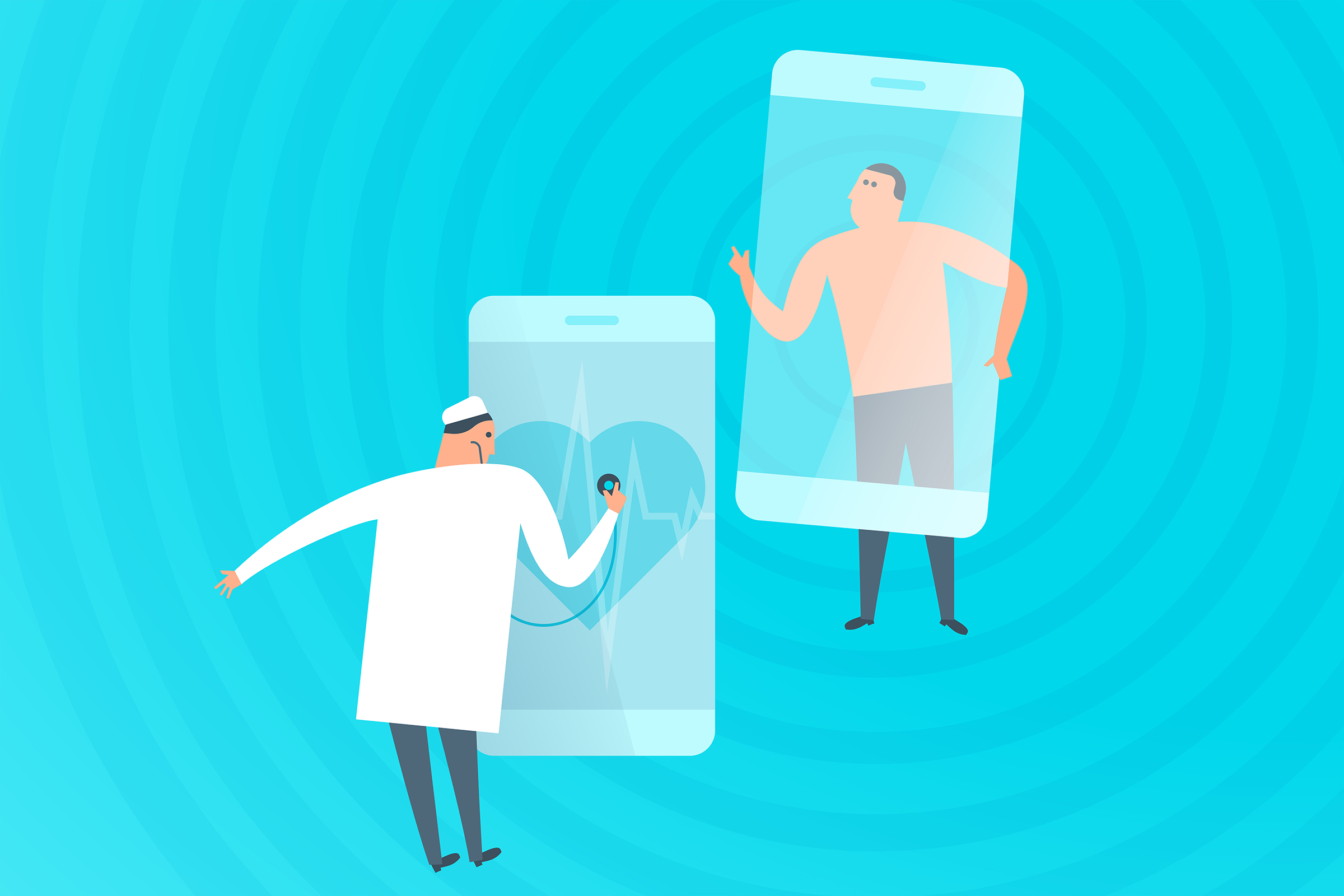
Telemedicine gives physicians an opportunity to rekindle the traditional home call with a modern twist, but we need to scale our understanding to use the platform well. As an academic physician who routinely trains residents to use telemedicine in clinical practice, I am always excited about the great opportunities telemedicine brings to augment the patient experience with the medical system. However, recently, when I read in a major medical journal that the platform was being misused for antibiotic over-prescription, and when a major newspaper highlighted an unempathetic use of telemedicine, I got concerned. Both incidences point out the necessity of residents having the proper training to use and implement technology for adequate patient care.
Why now? The Market and the Economics
Telemedicine implementation and adoption has vastly increased in the last decade. According to the Pew Research Center, smartphone ownership has reached near ubiquity in the 18–29 age demographic. These devices are equipped with high-fidelity cameras, microphones, and plug-and-play peripherals that make teleconferencing seamless and open new possibilities for physicians to collect health care information directly from patients. Additionally, this age demographic is accustomed to on-demand delivery of goods and services via their smartphones — banking, movie-watching, ride-sharing, grocery delivery, to name just a few. Their expectations for the health care industry are no different. This patient demographic is comfortable with their mobile phones collecting data in the background. They are also comfortable with proactively showing their consumer-grade remote monitoring data (continuous glucose monitors, step counts, sleep cycles, etc.) to their providers, in the hope of gaining new insights based on their data during a consultation session. This is exactly the same peer population that developing physicians, those currently in training, will care for as their careers advance. Therefore, they need to be prepared for the clinical expectations of the patient group they will be providing for.
The market appetite for telemedicine keeps growing. In 2017, the global telemedicine market generated over $21 billion in revenue, and that figure is expected to multiply each year. Physicians are also advocating for and exploring alternative venues in which to practice. They often recommend telemedicine as an alternative to clinic-based career. Finally, as health care costs continue to rise, large health care systems are looking to bundle telemedicine services to augment their value, brand loyalty, and patient experience, particularly as insurance entities find more ways to reimburse telemedicine services.
Training to Avoid Telemedicine Pitfalls
Just as medical school and residency inculcates the value of a thorough review of systems, or the anatomy of a SOAP note, specialty residency curriculums should require residents to understand a rubric with which to effectively use telemedicine. They should also be instructed about how to avoid common telemedicine mistakes that cause patient harm. Residents need to learn the nuances involved in telemedicine related to patient engagement, history-taking, and patient examination. The provider should also be trained to determine if the platform is not appropriate.
With anesthesia evaluations, telemedicine offers an opportunity to “see” a patient’s home environment and appraise the support network they will have as they recover from surgery. In addition, subtle information garnered from a video visit goes well beyond the quality of a simple phone screen. For example: What is the pallor of the patient’s skin? Does the patient “look sick” as they are approaching surgery? Can the patient complete sentences when they speak, or do they truly have bad shortness of breath at rest? How does their airway look? Would it be difficult to intubate the patient?
The Importance of “Webside” Manner
Medical schools spend four years instilling a code of respect for direct patient contact, but as physicians increasingly interface with patients digitally, our training programs must develop similar curricula for effective remote patient interactions. Some doctors are already proposing example curricula but overall, formal telemedicine education is still a desolate place.
Academia needs to formally study and develop methods on how to build rapport with patients remotely. We need to instill best practices to optimize camera angles when interviewing a patient. Looking at the camera lens, and not the patient’s image on the screen, is a simple start. We need to develop skills for providers to “scan” the home environment to pick up subtle cues about a patient’s home life during telemedicine encounters. It goes without saying that we must train our residents how to appropriately share sensitive information across digital platforms. With the rate of recent interest and growth in remote patient monitoring technologies (from industry and health care systems alike), we owe it to our trainees to help them understand and navigate these new tools.
Telehealth and telemedicine are growing in interest and are here to stay. Without formal curriculum, personalized to each subspecialty in medicine, we are doing a disservice to new doctors. We need to give training for these new platforms the attention and meticulousness that our medical training has committed to direct patient interactions for hundreds of years. Let us urge the ACGME not to doom our graduates to becoming anachronistic providers in a connected and increasingly digital health care environment.
Nirav Kamdar is an assistant professor and Director of Quality in the Department of Anesthesiology and Perioperative Medicine at UCLA Health. He is available online: @DrNVKamdar.







